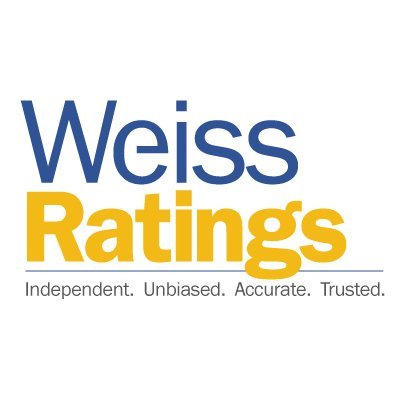
On 24 January 2018, the US rating company Weiss Ratings became the first to rate crypto coins. However, the list has caused a great deal of excitement on the Internet, with some wondering what criteria were used to select the crypto-currencies that were scored, or the motivations behind the scores.
The Weiss Ratings note system
The rating agency, based in Florida, uses a lettering system from A to E, with A being the best rating and E being the worst (A = excellent, B = good, C = acceptable, D = weak and E = very weak). Each letter can be qualified by a "+" or " - ". No cryptocurrency has received an A rating. But crypto aficionados should be reassured: Weiss is famous for giving its best rating very rarely, no matter what type of asset it evaluates.
Bitcoin rated C+
The undisputed reference of the cryptocurrency complex, Bitcoin, has been rated C+. Ethereum, second in terms of market value, was rated B. The rating agency justified its choice by the problems of speed and high transaction costs of Bitcoin. Concerns which are much less important on the Ethereum network, and which therefore justify the higher rating given to ETH.
The Best ones: Cardano, NEO, Steem and EOS
Of the 64 crypto coins that are noted, in addition to Ethereum only EOS (B), Cardano, NEO, Steem (B- for the 3) were awarded the mention "good". All others were rated from D to C+. These include Stellar (C), Ripple (C), Monero (C), and others.
The Bad ones
Many of the cryptocurrencies evaluated have received ratings from D+ or D: PotCoin, Rise, Quark, Expanse, Matchpool and SaluS.
Weiss Ratings victim of attack and criticism
Even if it is impossible to satisfy everyone, the publication of this list caused controversy on the web. The Weiss Ratings site was attacked by DDoS (from Korea) a few hours before the list was published. Fakes have been circulating on the Internet. When the legitimate list became known, many critics fell on the rating agency.
The next day, Weiss even had to split a supporting post on his blog, entitled "Why some of our notes seem strange". In particular, he explained that no A were attributed because of the high volatility in the crypto-currency market. Weiss also promises that in the future, the rating will be detailed for each of these 4 categories:
- Risks
- Reward (financial potential)
- Technology
- Fundamental
These nuances should make it possible to better define the potential of all cryptocurrencies displaying the same note.
On what criteria were the rated currencies selected?
However, there is one issue that was not clarified to my knowledge by Weiss Ratings. Find out what criteria were used to define the list of cryptocurrencies noted. For example, we may be surprised not to see IOTA in the list, which is now a permanent member of the top 15. Almost all DAG cryptos are in the list (XRB, BYTE), except the main one. What does Feathercoin do, ranked 250th in the ranking of market values, in this list of less than 70 cryptocurrencies? Logic would have wanted Weiss to select the rated cryptos on the basis of the market value classification. This is clearly not the methodology that has been adopted and seems subjective.
Are these Weiss ratings useful?
No. Rating agencies do not really have the reputation of being reliable or visionary. For example, Lehman Brothers was rated AAA just before it collapsed. It is perfectly legitimate we want to take a look at the list as a curiosity. But taking decisions based on this kind of information, there is a gap.
The publication of these notes does, however, bring good news. The fact that a rating agency, even if it is a minor player in the sector, looks at the cryptocurrency sector is a positive factor in terms of credibility and legitimacy. It is primarily investment companies and institutional investors that use such services. This could encourage them to invest in cryptocurrencies.